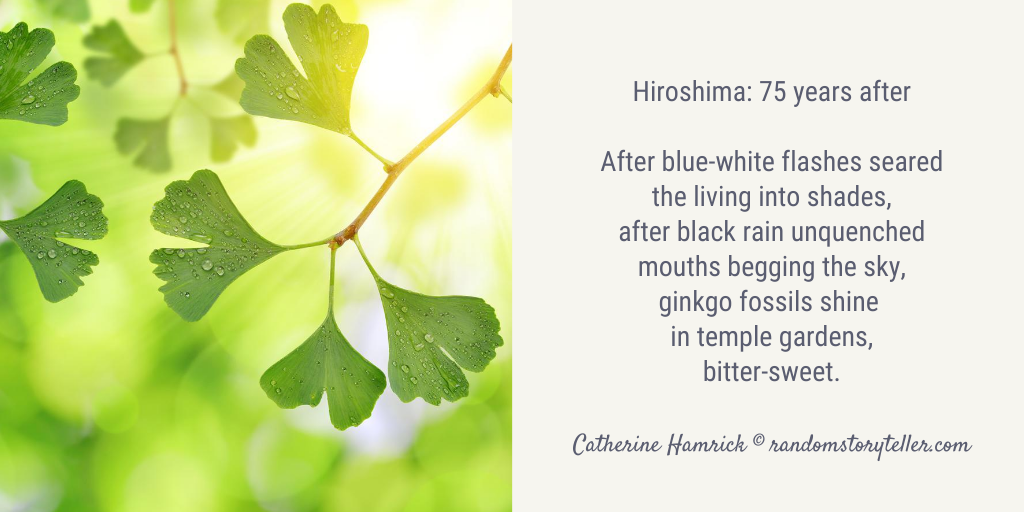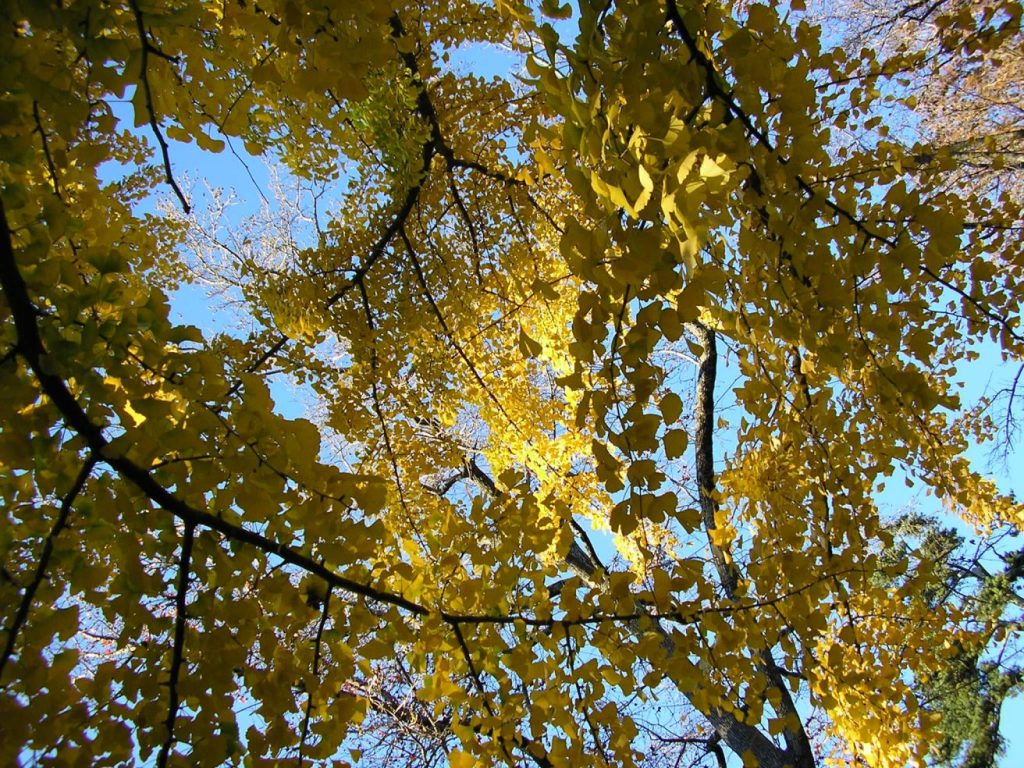After blue-white flashes seared
the living into shades,
after black rain unquenched mouths begging the sky,
ginkgo fossils shine
in temple gardens,
bitter-sweet.
In a split second on August 6, 1945, up to 140,000 souls disappeared in the Hiroshima atomic blast. Yet new buds emerged from six ginkgo trees within one mile from the bomb site. A living fossil unchanged for 50+ million years, Ginkgo biloba is an endangered plant—and a testament to survival, even hope.






Leave a Reply to Peg HamrickCancel reply